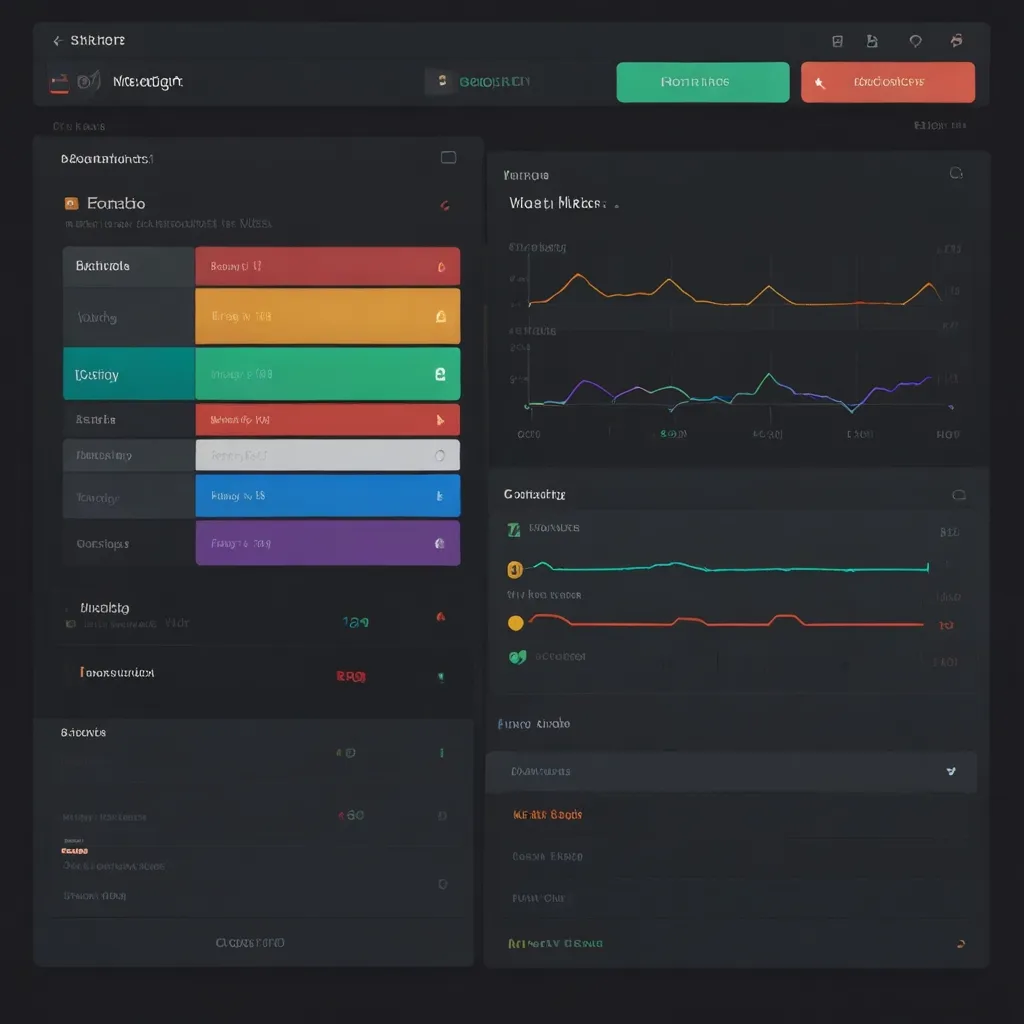Schema inheritance in Marshmallow is like a secret weapon for Python ninjas. It’s all about working smarter, not harder. You know how we’re always trying to keep our code DRY (Don’t Repeat Yourself)? Well, schema inheritance is perfect for that.
Think of it like building with Lego blocks. You’ve got your base pieces, and then you can add on and customize to your heart’s content. That’s what schema inheritance lets you do with your schemas.
Let’s dive into the basics. In Marshmallow, you can create a base schema that has all the common fields and methods you need. Then, you can create child schemas that inherit from this base. It’s like getting a head start on your work – you’re not starting from scratch every time.
Here’s a simple example to get us started:
from marshmallow import Schema, fields
class PersonSchema(Schema):
name = fields.Str(required=True)
age = fields.Int()
class EmployeeSchema(PersonSchema):
job_title = fields.Str()
salary = fields.Float()
In this code, EmployeeSchema inherits all the fields from PersonSchema and adds two more. It’s like saying, “An employee is a person, but with some extra info.”
Now, why is this cool? Well, imagine you’re building a big application with lots of different user types. You might have customers, employees, admins, and so on. They all share some basic info (name, age, etc.), but each type has its own unique fields. With schema inheritance, you can set up that shared info once and reuse it everywhere.
But wait, there’s more! (I’ve always wanted to say that in a blog post.) Marshmallow’s inheritance isn’t just about adding fields. You can also override fields in the child schema if you need to. Let’s say you want to make the age field required for employees:
class EmployeeSchema(PersonSchema):
age = fields.Int(required=True)
job_title = fields.Str()
salary = fields.Float()
Now, age is optional for regular persons but required for employees. It’s like telling Marshmallow, “Hey, I know we said age was optional before, but for employees, we really need to know.”
But what if you want to keep the original field and just add some extra validation? Marshmallow’s got you covered there too. You can use the parent property to access the original field:
from marshmallow.validate import Range
class EmployeeSchema(PersonSchema):
age = fields.Int(required=True, validate=Range(min=18))
@validates('age')
def validate_age(self, value):
super().validate_age(value)
if value > 65:
raise ValidationError("Sorry, we have a mandatory retirement age.")
In this example, we’re saying employees must be at least 18 (using the Range validator), and we’re also adding an extra check for a maximum age. We’re building on top of the original validation, not replacing it entirely.
Now, let’s talk about methods. Just like with fields, you can inherit, override, or extend methods from the parent schema. This is super useful for complex validation or data manipulation.
class PersonSchema(Schema):
name = fields.Str(required=True)
age = fields.Int()
def make_person(self, data):
return f"This is {data['name']}, who is {data['age']} years old."
class EmployeeSchema(PersonSchema):
job_title = fields.Str()
salary = fields.Float()
def make_person(self, data):
person_info = super().make_person(data)
return f"{person_info} They work as a {data['job_title']}."
In this example, EmployeeSchema is extending the make_person method from PersonSchema. It’s like saying, “Yeah, do that thing you normally do, but then let me add some extra info.”
Now, I’ve got to be honest with you. When I first started using schema inheritance, I went a bit overboard. I was creating these deep, complex inheritance trees, thinking I was being so clever. But you know what? Sometimes simpler is better. It’s important to find the right balance between reusability and readability.
One trick I’ve learned is to use mixins. Instead of creating a single, monolithic base schema, you can create smaller, focused schemas that each handle a specific set of fields or behaviors. Then you can mix and match these as needed. It’s like creating your own custom Lego blocks.
class NameMixin(Schema):
first_name = fields.Str(required=True)
last_name = fields.Str(required=True)
class AgeMixin(Schema):
age = fields.Int()
class JobMixin(Schema):
job_title = fields.Str()
salary = fields.Float()
class EmployeeSchema(NameMixin, AgeMixin, JobMixin):
employee_id = fields.Str(required=True)
This approach gives you more flexibility and can make your code easier to understand and maintain.
Another cool thing about schema inheritance is that it plays nice with Marshmallow’s meta options. You can set options in the base schema and override them in child schemas if needed. For example:
class BaseSchema(Schema):
class Meta:
ordered = True
unknown = EXCLUDE
class ChildSchema(BaseSchema):
class Meta(BaseSchema.Meta):
unknown = INCLUDE
Here, ChildSchema inherits the ordered option from BaseSchema but overrides the unknown option.
Now, let’s talk about a real-world scenario where schema inheritance can save your bacon. Imagine you’re building an API for a social media platform. You’ve got different types of posts - text posts, image posts, video posts. They all share some common fields (author, timestamp, likes), but each has its own specific fields too.
Without schema inheritance, you might end up with something like this:
class TextPostSchema(Schema):
author = fields.Str(required=True)
timestamp = fields.DateTime(required=True)
likes = fields.Int()
content = fields.Str(required=True)
class ImagePostSchema(Schema):
author = fields.Str(required=True)
timestamp = fields.DateTime(required=True)
likes = fields.Int()
image_url = fields.Url(required=True)
class VideoPostSchema(Schema):
author = fields.Str(required=True)
timestamp = fields.DateTime(required=True)
likes = fields.Int()
video_url = fields.Url(required=True)
duration = fields.Int(required=True)
Yikes! That’s a lot of repetition. But with schema inheritance, we can clean this up:
class BasePostSchema(Schema):
author = fields.Str(required=True)
timestamp = fields.DateTime(required=True)
likes = fields.Int()
class TextPostSchema(BasePostSchema):
content = fields.Str(required=True)
class ImagePostSchema(BasePostSchema):
image_url = fields.Url(required=True)
class VideoPostSchema(BasePostSchema):
video_url = fields.Url(required=True)
duration = fields.Int(required=True)
Much better! Now if we need to add a new field to all posts (like comments), we only need to add it to BasePostSchema. It’s like having a single source of truth for our common post data.
But here’s where it gets really interesting. What if we want to create a schema for a post that’s both an image and a video? With our inheritance setup, it’s a breeze:
class MediaPostSchema(ImagePostSchema, VideoPostSchema):
pass
This new schema will have all the fields from BasePostSchema, plus the fields from both ImagePostSchema and VideoPostSchema. It’s like mixing and matching to create exactly what we need.
Now, I’ve got to warn you about something. When you’re using multiple inheritance like this, you need to be careful about the order of the parent classes. Python uses something called the Method Resolution Order (MRO) to determine which parent class to use when there’s a conflict. It’s a bit like a family tree - the order matters!
Let’s wrap this up with a few best practices I’ve learned (sometimes the hard way):
-
Keep your base schemas focused. It’s tempting to put everything in a base schema, but that can lead to bloated, confusing schemas. Remember, you can always use multiple inheritance to combine smaller, focused schemas.
-
Use abstract base classes when appropriate. If you have a base schema that shouldn’t be instantiated on its own, you can use Python’s abc module to make it abstract.
-
Document your schemas well. Inheritance can make your code more efficient, but it can also make it harder to understand at a glance. Good documentation can save you (and your teammates) a lot of headaches.
-
Be careful with nested schemas. Inheritance works with nested schemas too, but it can get complicated quickly. Sometimes it’s clearer to define nested schemas separately.
-
Test, test, test! Inheritance can introduce subtle bugs, especially when you’re overriding methods or using multiple inheritance. Thorough testing is your friend.
Schema inheritance in Marshmallow is a powerful tool. It can help you write cleaner, more maintainable code. But like any powerful tool, it needs to be used wisely. Start simple, build up gradually, and always keep readability in mind. Happy coding, fellow Python ninjas!






